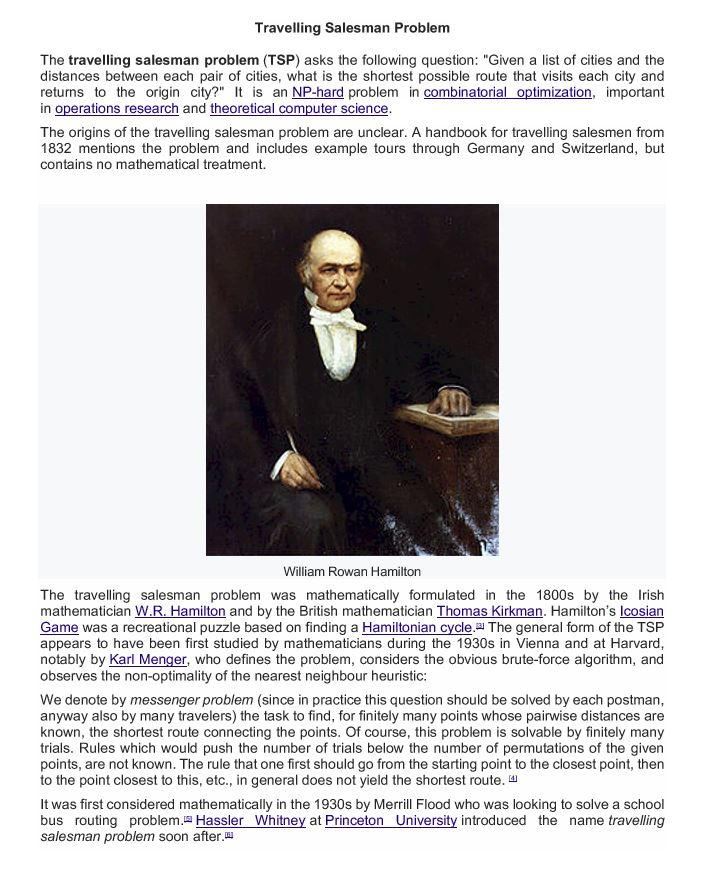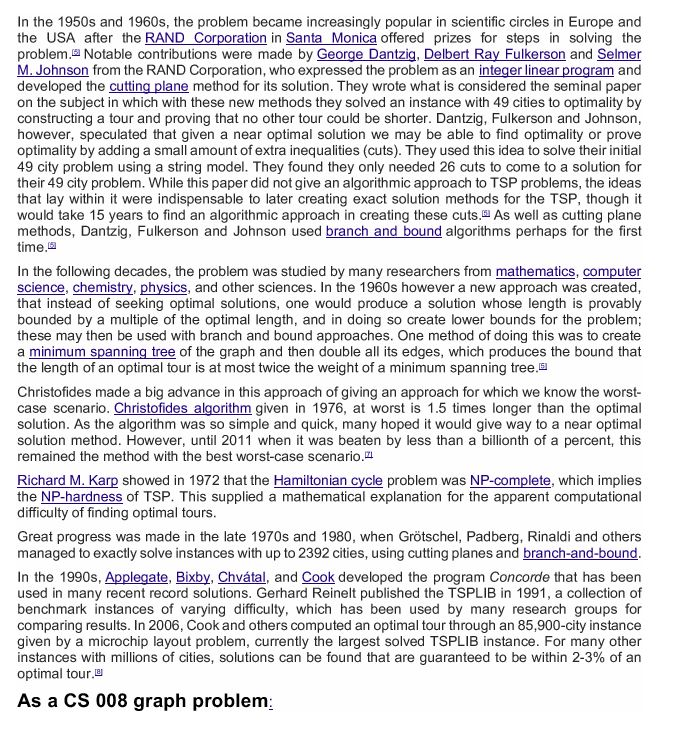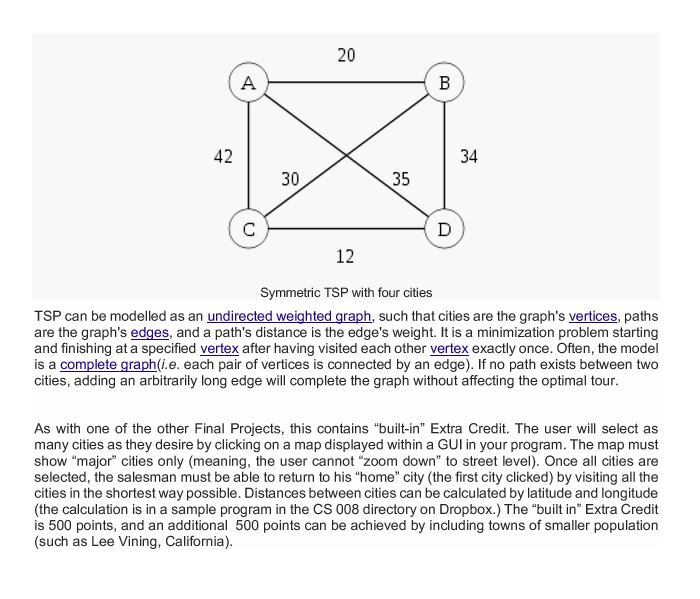c++ No Coding. Please read assignment carefully and breakdown what its asking. Looking for someone who can tell me what the problem is asking for and explain it to me clearly. Pseudo code would be ideal. I need to properly understand what the problem is asking for before i can begin coding it. Please be thorough -- every little thing matters. The first two pictures explains its background. The last pic has the assignment info. I will rate/thumbs up if done correctly. Thank you 


Travelling Salesman Problem The travelling salesman problem (TSP) asks the following question: "Given a list of cities and the distances between each pair of cities, what is the shortest possible route that visits each city and returns to the origin city?" t is an NP-hard problem in combinatorial optimization, important in operations research and theoretical computer science The origins of the travelling salesman problem are unclear. A handbook for travelling salesmen from 1832 mentions the problem and includes example tours through Germany and Switzerland, but contains no mathematical treatment. William Rowan Hamilton The travelling salesman problem was mathematically formulated in the 1800s by the Irish mathematician W.R. Hamilton and by the British mathematician Thomas Kirkman. Hamilton's Icosian Game was a recreational puzzle based on finding a Hamiltonian cycle. The general form of the TSP appears to have been first studied by mathematicians during the 1930s in Vienna and at Harvard, notably by Karl Menger, who defines the problem, considers the obvious brute-force algorithm, and observes the non-optimality of the nearest neighbour heuristic: We denote by messenger problem (since in practice this question should be solved by each postman, anyway also by many travelers) the task to find, for finitely many points whose pairwise distances are known, the shortest route connecting the points. Of course, this problem is solvable by finitely many trials. Rules which would push the number of trials below the number of permutations of the given points, are not known. The rule that one first should go from the starting point to the closest point, then to the point closest to this, etc., in general does not yield the shortest route. It was first considered mathematically in the 1930s by Merrill Flood who was looking to solve a school bus routing problem. Hassler Whitney at Princeton University introduced the name travelling salesman problem soon after. Travelling Salesman Problem The travelling salesman problem (TSP) asks the following question: "Given a list of cities and the distances between each pair of cities, what is the shortest possible route that visits each city and returns to the origin city?" t is an NP-hard problem in combinatorial optimization, important in operations research and theoretical computer science The origins of the travelling salesman problem are unclear. A handbook for travelling salesmen from 1832 mentions the problem and includes example tours through Germany and Switzerland, but contains no mathematical treatment. William Rowan Hamilton The travelling salesman problem was mathematically formulated in the 1800s by the Irish mathematician W.R. Hamilton and by the British mathematician Thomas Kirkman. Hamilton's Icosian Game was a recreational puzzle based on finding a Hamiltonian cycle. The general form of the TSP appears to have been first studied by mathematicians during the 1930s in Vienna and at Harvard, notably by Karl Menger, who defines the problem, considers the obvious brute-force algorithm, and observes the non-optimality of the nearest neighbour heuristic: We denote by messenger problem (since in practice this question should be solved by each postman, anyway also by many travelers) the task to find, for finitely many points whose pairwise distances are known, the shortest route connecting the points. Of course, this problem is solvable by finitely many trials. Rules which would push the number of trials below the number of permutations of the given points, are not known. The rule that one first should go from the starting point to the closest point, then to the point closest to this, etc., in general does not yield the shortest route. It was first considered mathematically in the 1930s by Merrill Flood who was looking to solve a school bus routing problem. Hassler Whitney at Princeton University introduced the name travelling salesman problem soon after









